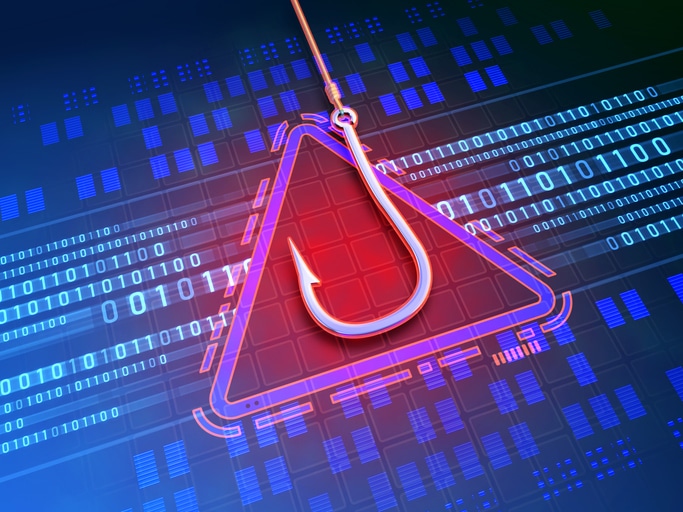Microsoft 365 Hacks Are on the Rise: How to Secure Your Data
Cloud computing has been at the center of human resilience against the pandemic. Microsoft 365, the world’s productivity cloud, has helped more than 250 million users across a variety of industries build flexibility, ensure productivity, reform work, and confidently address complex challenges brought on by the COVID-19 pandemic.
While Microsoft 365 is one of the world’s most popular productivity suites, it has also been used by hackers across the globe, as was demonstrated by the SolarWinds cyberattack. While attacks like the SolarWinds attack utilized unique strategies, the threat actors also exploited inefficient security configurations. Microsoft 365 does offer its own native security features, but the features need to be properly configured for users to enjoy the benefits.
Microsoft 365 accounts continue to be targeted by threat actors. It seems that no organization is safe from cybercriminals. Recently, Microsoft acknowledged that it has become harder for them to identify cybercriminals due to the increasing sophistication of cyber threats. One of the main areas of concern is the internet of things (IoT) devices. Other areas of concern are ransomware and credential harvesting. Without a doubt, hacking has become a major concern for everyone. It is crucial to stay safe against such attacks.
The Cyber Threat Is Real
Cybersecurity experts were already aware that 2020 and 2021 were going to see a rise in ransomware, phishing attacks, and other cyber threats, and this was before the COVID-19 pandemic turned the world upside down. Now that the pandemic has caused a major disruption to the world, threats are expected to become worse as the months pass by.
With more devices connected to networks, the larger an attack surface grows, making it easier for threat actors to disrupt a network. During the early days of the COVID-19 pandemic, many employees were working in their bedrooms, living rooms, kitchens, etc. Business leaders only had a short time to construct their remote work plans. As a result, the majority of organizations were unable to implement security best practices.
With that in mind, more people are asking: How do we stay safe?
Staying Safe Against Cyber Threats
Have you made changes to your Microsoft 365 security settings, or are they still on the default settings?
Many organizations do not have a clear understanding of how to update security settings in the platform, and others are not aware that they need to make changes to the security settings. Unfortunately, this can lead to disruptions and data breaches due to the misconfiguration of security settings, which continues to be a major cybersecurity problem.
Due to the reliance on cloud services, misconfiguration of security settings is one of the leading causes of ransomware and other malware attacks, as well as compromised cloud accounts. It is important you do not allow this type of weakness to wreak havoc throughout your San Francisco Bay area organization.
If you are not sure what you should do to stay safe against the rising threats against Microsoft 365, here are a few steps you can take:
Protect Your Emails
Phishing attacks are at the forefront of data security concerns across organizations of all sizes. One of the first steps you should take to build resistance against hacks is to have a clear understanding of such attacks. Employees should be equipped with phishing prevention education and training to help prevent these attacks from disrupting operations.
However, you should not stop at phishing education and training. Organizations need to implement anti-phishing protection to help protect all users from phishing attacks. Threat Protection software can scan emails and prevent emails with malicious links and attachments from landing in employees’ email inboxes, reducing the chances that one of the employees will open a malicious link or attachment.
Setup Multi-Factor Authentication
Generally, when employees log into their Microsoft 365 accounts, they will enter their username and password to verify their identity. However, not every employee does the best job at protecting his or her credentials.
Multi-Factor Authentication (MFA) is an effective way to increase the data security of your organization when using Microsoft 365. Microsoft’s Multi-Factor Authentication uses a two-step verification process and protects Microsoft 365 users from online threats that target accounts with weak or compromised passwords.
Users will be prompted to add a device to their account that can receive the unique code. Once users log in and enter the correct credentials, users will be sent the one-time use code that needs to be entered within a specific timeframe.
When MFA is enabled, it can prevent unauthorized access because hackers will not typically have access to the device that the MFA code will be sent to. When Multi-Factor Authentication is enabled, it will provide the extra layer of security more organizations need.
Protect Admin and User Accounts
Administrative user accounts in your organization are used to oversee the Microsoft 365 environment. What can happen when an administrative account is hacked? The impact of an administrative account being compromised can be significantly worse when compared to personal user accounts being compromised.
However, many organizations do not implement best practices when it comes to administrative privileges, and this leads to a wealth of problems. Organizations must grant admin privileges while ensuring security, but everyone should not be given admin privileges.
When admin and user accounts are secure, organizations can minimize security risks. Leaders and decision-makers can also enable temporary privileges – access to the admin accounts can be controlled based on the required information and the length of time a user would need the admin privileges.
The current state of today’s cybersecurity landscape has made it critical for organizations to take actions to protect confidential and sensitive data, whether the data is being stored or shared with others. It is imperative that your organization understand the security aspects of all devices and how every aspect of your organization’s data security infrastructure is important.
V&C Solutions can help your San Francisco Bay area organization ensure that all of your Microsoft 365 accounts are properly configured and that you have the best security settings that will meet the unique needs of your organization. Don’t let your organization fall victim to the ever-growing cyber threats wreaking havoc on organizations across the globe. Contact us today to schedule your consultation.





